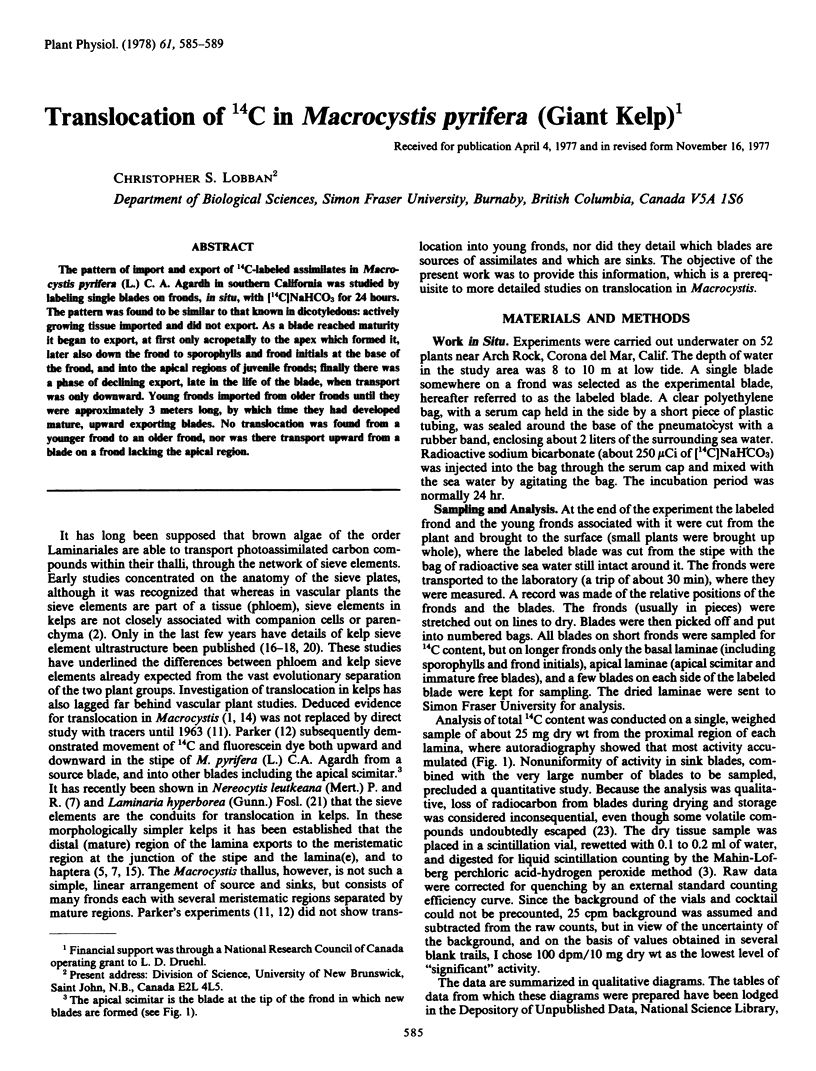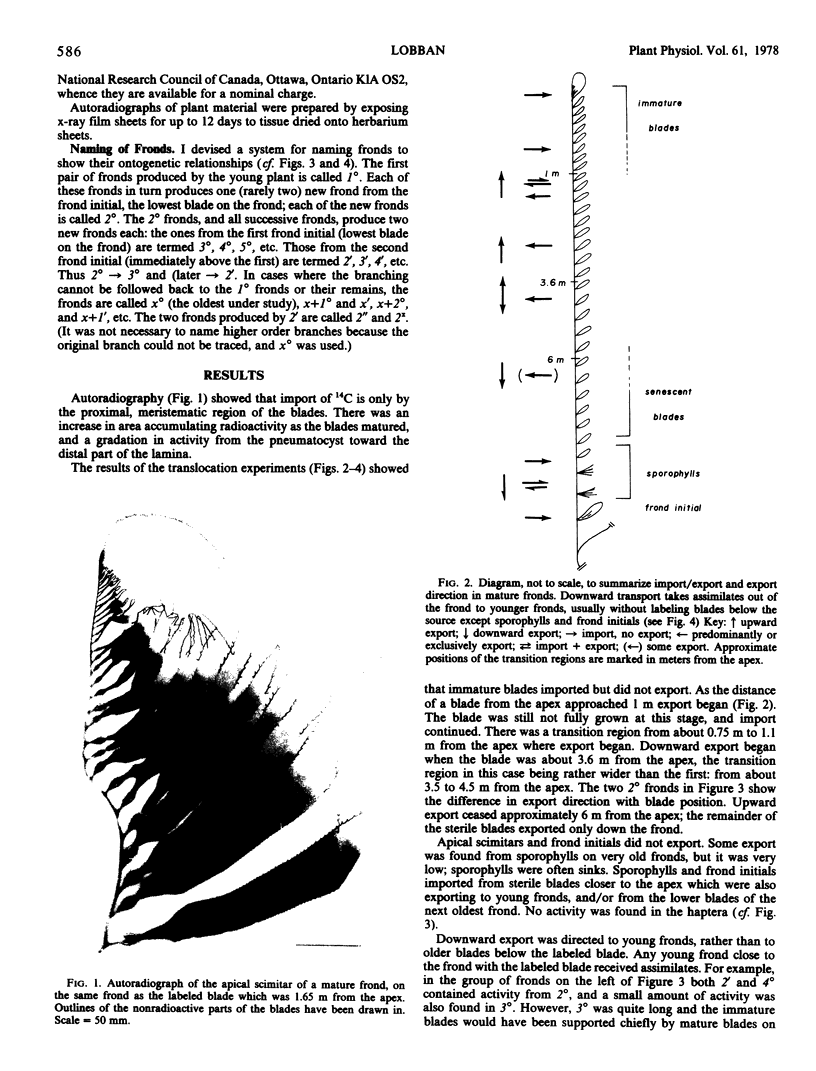Abstract
The pattern of import and export of 14C-labeled assimilates in Macrocystis pyrifera (L.) C. A. Agardh in southern California was studied by labeling single blades on fronds, in situ, with [14C]NaHCO3 for 24 hours. The pattern was found to be similar to that known in dicotyledons: actively growing tissue imported and did not export. As a blade reached maturity it began to export, at first only acropetally to the apex which formed it, later also down the frond to sporophylls and frond initials at the base of the frond, and into the apical regions of juvenile fronds; finally there was a phase of declining export, late in the life of the blade, when transport was only downward. Young fronds imported from older fronds until they were approximately 3 meters long, by which time they had developed mature, upward exporting blades. No translocation was found from a younger frond to an older frond, nor was there transport upward from a blade on a frond lacking the apical region.
Full text
PDF




Images in this article
Selected References
These references are in PubMed. This may not be the complete list of references from this article.
- Parker B. C. Translocation in the Giant Kelp Macrocystis. Science. 1963 May 24;140(3569):891–892. doi: 10.1126/science.140.3569.891. [DOI] [PubMed] [Google Scholar]
- Thrower S. L. The pattern of translocation during leaf ageing. Symp Soc Exp Biol. 1967;21:483–506. [PubMed] [Google Scholar]



